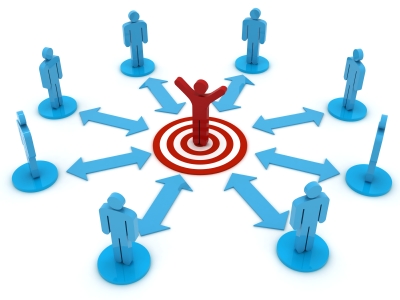One of the chronic conditions that modern Americans (and many of our foreign friends) are suffering from is poor posture. Never in history have so many people been faced with such long hours of constant sitting, and it is affecting more than our waistlines.
The real damage caused by chronic sitting is our inability to move properly when we finally realize that we NEED movement in our lives. We have chronic back and neck pain that are compounded when we start to exercise and realize that we have limited range of motion. Most types of exercise require good posture BEFORE you can properly perform the movements. Running, biking, swimming, weight lifting, and even yoga can actually be more harmful than helpful if the proper steps are not taken to rework posture.
The best way to keep your body moving well is pay attention to your posture from the beginning. Given that most of us, regardless of current activity levels, have some sort of postural limitations, here are a few approaches that are safe, effective, and that you can start doing today:
1) Breathing. Learning to breathe properly can have a huge influence on maintaining good posture, so check out my previous article, Why Your Baby Moves Better than You, to learn about a great breathing exercise.
2) Stand. The more you stand, the better posture you will have. This can be done at the office, around the house, or in transit (walking). By staying on your feet more, you will help your body to relearn how to hold itself properly. If you do this, make sure that you wear flat shoes. The less sole, the better (and barefoot is preferred when possible.)
3) Massage. For those of you who can afford it, regular massage can help to loosen tight muscles and realign joints. Certain types of massage are posture-based such as Rolfing or Heller Work, but others can be helpful too, including trigger point therapy and hands on muscle therapy. If you cannot afford professional massage, I would still recommend learning how to use self-massage techniques to release common areas of tension. The Trigger Point Therapy Workbook is a great source for this. Once you are set with your massage, you have to do the next one (stretching) to make it count.
4) Stretch. We can all stretch more, and it does not have to take that much time. You may already have a few stretches that you know and enjoy doing from time to time. Start doing those 2-3 times per day (makes for a nice break from the computer) and you will be on your way to less tension and better posture. Some of my favorite stretches are the Lying Twist, the Prone Press-up, the Hip Flexor Stretch, and the 90/90. I like these because they help to lengthen those areas that are most affected by sitting.
5) Pulling Exercises. This is going to be important for anyone who is involved in weight training or is interested in starting. I highly recommend including strength training in your weekly routine if you have not already. Strength training produces a wide variety of benefits, including increases in bone density, strength, power, and energy and potential decreases in fat, joint pain, and muscle fatigue. When we look at strength training in regards to posture, there are a few key exercises that can be especially beneficial. Deadlifts, Single Leg Deadlifts, Rows, Pull-Ups, and YTWLs are all great movements in working your postural muscles.
Each of these steps can have a positive effect on posture, so start incorporating some today. I have listed these in the order of importance and convenience. If you can do nothing else, just learning to breathe better will change how you sit at your desk, hold tension, and carry yourself. If you can then find ways to not sit at all, wonderful! Standing and walking are almost always beneficial. For some of you, massage, stretching, and strength training will be needed to create lasting changes for the better. However, one without the others will be not nearly as effective. If you only stretch without massage or strength training, the muscles will be limited in their ability to stretch and have no reason to maintain their length. If you only go for massage, you will quickly tighten up again as you have not re-established length or strength.
We all sit too much, but let’s see what we can start doing today to make a difference in how that sitting will affect us over the next 5, 10, 20+ years. The sooner we start, the easier the road will be to regain our posture and our ability to move.





